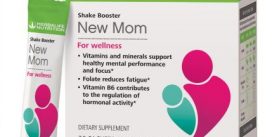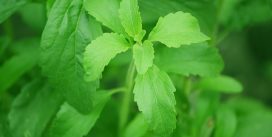Tasty Fiber Sources for your daily Healthy Diet

No more Excuse: Fibers are available in so much tasty and healthy Foods
The fear of carbs is a common one in today’s society, but is undoubtedly unnecessary when a whole foods, non-processed food diet is followed. Healthy carbohydrates from these sources are not the enemy, because their fibers help slow down blood sugar, while also providing support for the heart, digestive system, satiety levels, and even your weight.
Unlike refined and processed foods, whole food sources of carbohydrates are used differently in the body, not just to keep you energized, but because they also provide nutrients to keep your hormones stable, promote healthy brain function, and they can even help you sleep and recover from exercise.
Fiber is also one of the best foods to aid in weight maintenance since it’s a calorie-free carbohydrate that your body uses during elimination to whisk away harmful fats and toxins with it out of the body. To be sure you avoid unhealthy sources of complex carbs, we’re going to show you the very best ones to eat, recipes to help you get your fill, and even provide you with some reading information and product suggestions too.
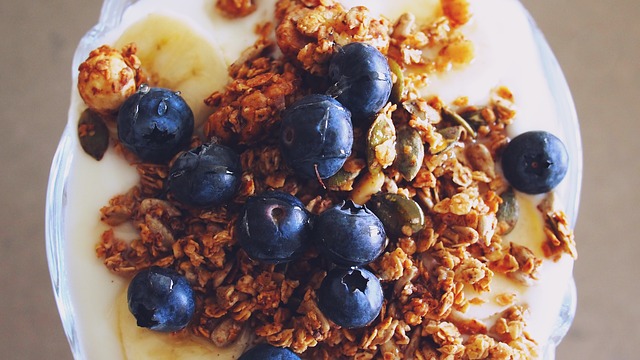 Complex carbs from whole foods break down slowly in the body, they provide necessary fiber for heart and digestive health, they keep you full, and prevent blood sugar surges and are lower on the glycemic index than some animal foods often promoted as low-carb that actually raise insulin. Complex carbs also propel your body and give your muscles energy.
Complex carbs from whole foods break down slowly in the body, they provide necessary fiber for heart and digestive health, they keep you full, and prevent blood sugar surges and are lower on the glycemic index than some animal foods often promoted as low-carb that actually raise insulin. Complex carbs also propel your body and give your muscles energy.
Most fitness fanatics prioritize protein on their daily menu, with good reason. To build muscle like a pro, protein should be tops on your list. But while other nutrients play important roles, fiber is often an afterthought. And that could be a big mistake.
In fact, chances are you’re not getting enough fiber. Research suggests that more than 90 percent of Americans aren’t meeting their daily fiber requirement, which is 25 grams a day for women and 38 grams a day for men.
When it comes to keeping you as lean as a racehorse, fiber exerts a powerful one-two punch on your pudge. First, fiber waylays hunger, so it helps prevent you from overeating those tempting cookies in the office break room. A diet with adequate amounts of grit also improves blood sugar control, which can go a long way in reducing fat storage.
Let’s see how simple it is to get enough fibers evry day:
Cook up a bunch of lentils and use them in soups, chili, and salads. You can quickly whip up a fiber-packed lunch for the work day by tossing together lentils with halved cherry tomatoes, diced bell pepper, baby spinach, feta cheese, and dressing. Lentils are also a good ingredient to use in veggie burgers when you want to give beef the night off. Also serve them as a side to salmon.
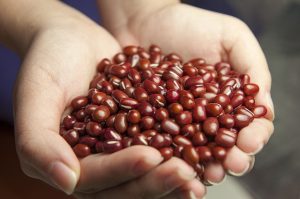 Kidney beans are an ideal way to bolster fiber numbers in your next batch of chili. Also mix them with other beans, chopped veggies, and a dressing for a quick salad that’s overloaded with nutritional benefits.
Kidney beans are an ideal way to bolster fiber numbers in your next batch of chili. Also mix them with other beans, chopped veggies, and a dressing for a quick salad that’s overloaded with nutritional benefits.
Also called garbanzo beans, chickpeas have a slightly nutty flavor and a nutritional resumé that puts many other foods to shame. This includes laudable amounts of fiber, plant protein, iron, and vitamin B6, the latter of which is necessary for a healthy nervous system.
It’s easy to toss a handful of canned chickpeas onto your salads or to whip up your own hummus. For an addictive, crunchy, fiber-packed snack, pat a 14-ounce can of chickpeas dry with a clean paper towel. Remove any loose skins. Place in a bowl and toss with 1 tablespoon oil. Add 1 teaspoon cumin, 1/2 teaspoon dried thyme and 1/4 teaspoon salt, then toss to coat the chickpeas with the spice mixture.
Soups, chili, tacos, and salads are easy ways to take in more of these dark delights. Try making a chili using black beans and then stuffing it into a baked sweet potato. Surprise—you can even sneak black beans into better-for-you brownie recipes. Simply place a 14-ounce can of black beans including its juices into a blender or food processor and puree. Then add the mash directly to your brownie mix, replacing about 75 percent of the fat a recipe or premade mix advises.
Beyond quesadillas, tacos, burritos, and a dip for tortilla chips, try using refried beans as a general sandwich spread or in lieu of tomato sauce on pizza.
 For a lunch that packs a punch, stir together cooked hulled barley with chopped veggies like carrots, bell pepper, and parsley, cooked chicken, feta cheese, and lemon vinaigrette. Also try swapping barley for rice for a healthier take on fried rice.
For a lunch that packs a punch, stir together cooked hulled barley with chopped veggies like carrots, bell pepper, and parsley, cooked chicken, feta cheese, and lemon vinaigrette. Also try swapping barley for rice for a healthier take on fried rice.
Move over whole-wheat flour—there’s a better option if you want to jack up your fiber numbers. Made by grinding up whole rye kernels into a fine powder, hearty rye flour is often overlooked in U.S. kitchens but commonly used in Scandinavian cooking for items like breads and crackers.
Beyond fiber, it harbors several important nutrients, including phosphorus, selenium, magnesium, and iron. Keep in mind that “light rye flour” is similar to white flour in that it has had a portion of its nutritional goodness stripped away.
It’s easy to stir some inexpensive wheat bran into a pot of cooked oatmeal or into your favorite pancake batter. You can also blend some into your protein shakes and baked goods.
Spelt is a winning substitute for rice in burritos or try it in soups, stews, and veggie burgers.
While gluten-free millet is most often used in birdseed, this inexpensive whole grain isn’t just for the birds. It actually contains more fat-fighting fiber than quinoa and is a source of numerous must-have nutrients such as magnesium, copper, and zinc. More great news: Research shows that the often-overlooked little yellow beads are a stellar source of age-avenging antioxidants.
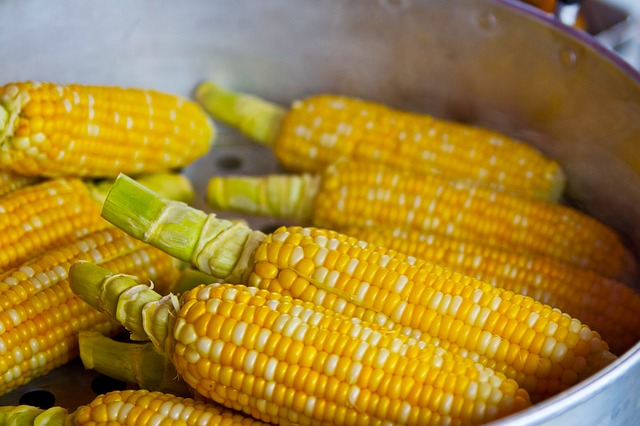 Popcorn makes a stellar addition to trail mix for a healthy snack whether you’re deskbound or lost in the woods. Try combining popcorn with some dried fruits, roasted nuts, and seeds.
Popcorn makes a stellar addition to trail mix for a healthy snack whether you’re deskbound or lost in the woods. Try combining popcorn with some dried fruits, roasted nuts, and seeds.
Sliced figs are a great “what’s that?” ingredient in sandwiches and salads. For your new favorite yogurt or oatmeal topping, in a medium-sized saucepan combine 1-1/4 cups brewed coffee, 20 dried mission figs (stems removed and quartered), 1/4 cup honey, 1 whole star anise, 1/4 teaspoon cinnamon, and 1 teaspoon orange zest. Bring to a boil, reduce heat, and simmer covered for 20 minutes.
With a slotted spoon, remove figs from the pan. Simmer liquid, uncovered, over medium-high heat until reduced and syrupy, 3-4 minutes. Combine figs and syrup; discard star anise.
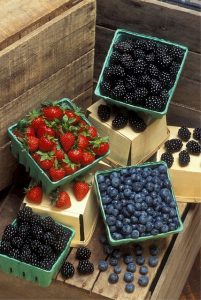 Giving your diet a fiber boost is as easy as tossing raspberries onto your yogurt and oatmeal. Stash a bag of frozen raspberries in your freezer and use them to elevate your protein shakes. For a gussied-up salad dressing, try blending together olive oil, fresh raspberries, red wine vinegar, Dijon mustard, a garlic clove, and salt and pepper to taste.
Giving your diet a fiber boost is as easy as tossing raspberries onto your yogurt and oatmeal. Stash a bag of frozen raspberries in your freezer and use them to elevate your protein shakes. For a gussied-up salad dressing, try blending together olive oil, fresh raspberries, red wine vinegar, Dijon mustard, a garlic clove, and salt and pepper to taste.
Use blackberries in protein shakes, cottage cheese, oatmeal, yogurt, green and fruit salads, or piled atop a stack of pancakes.
For an energy-boosting, fiber-packed snack, place 1-1/2 cups pitted dates and 3/4 cup almonds in a food processor container and blend until broken down into small pieces. Add 1/3 cup unsweetened dried coconut, 1/4 cup ground flax, 1/4 cup raw cacao powder, 1/2 teaspoon cinnamon, zest of 1 orange, juice of 1/2 orange, a pinch of salt, and blend until mixture clumps together. Form into 1-inch balls.
Beyond being a great out-of-hand snack, you can add chopped kumquats to yogurt, oatmeal, and salads. Or gussy up a salsa by combining chopped kumquats with diced red bell pepper, halved cherry tomatoes, sliced scallion, chopped cilantro, minced jalapeno, juice of 1/2 lime, and a couple pinches of salt.
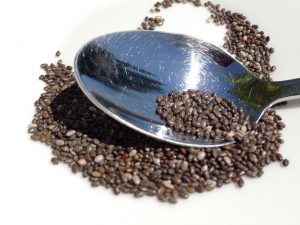 Tiny chia seeds have experienced a renaissance of late as a bona fide superfood. Not only is chia especially plush in fiber, the seeds are an excellent source of the essential omega-3 fatty acid alpha-linolenic acid, which may have heart-health benefits. White and dark chia seeds are generally equally nutritious.
Tiny chia seeds have experienced a renaissance of late as a bona fide superfood. Not only is chia especially plush in fiber, the seeds are an excellent source of the essential omega-3 fatty acid alpha-linolenic acid, which may have heart-health benefits. White and dark chia seeds are generally equally nutritious.
It’s easy to add chia seeds to items like oatmeal, yogurt, and protein shakes. When soaked in water, chia forms a gel. Or for a healthier fruit spread than the sugar-laced store-bought versions, try pureeing 1 cup blueberries with 1 tablespoon honey or maple syrup and 1/2 teaspoon cinnamon in a blender. Fiber content: 10 grams per ounce of chia seeds, or 34.4 grams per 100 grams
Try adding flax powder to your shakes, smoothies, pancake batters, and morning cereal. You can make your own supercharged nut butter spread by grinding together 1 cup unsalted almonds, 1 cup pecan halves, 1/4 cup ground flaxseed, and 1 tablespoon coconut oil or almond oil in a food processor or high-powered blender until creamy.
Use dried coconut to gussy up salads, salsas, granola, trail mix, and chia puddings.
Sprinkle sunflower kernels on salads, roasted vegetables, yogurt, cottage cheese, porridge, and pureed soups.
Use chopped pistachios to create a crunchy coating for salmon or sprinkle them over roasted sweet potatoes. Homemade energy bars and granola are other tasty places for them.
Few foods are as nutrient-dense as the wrongly maligned Brussels sprouts. Not only do they harbor fiber, but the sprouts are loaded with vitamin K and vitamin C. There’s even some research to suggest that vitamin C supplementation may reduce heart rate and perception of exertion during exercise, both of which can make your taxing workouts seem less difficult.
Not surprisingly, studies show that people who eat the most fiber tend to be the healthiest. So here are some more ideas :
The pear is a popular type of fruit that is both tasty and nutritious. It is one of the best fruit sources of fiber.
Strawberries are incredibly delicious. They taste better than any junk food.
Apples are among the tastiest and most satisfying fruits you can eat. They are also relatively high in fiber.
Raspberries are highly nutritious berries with a very strong flavor. They are loaded with vitamin C and manganese.
Bananas are a good source of many nutrients, including vitamin C, vitamin B6 and potassium.
Most nuts and seeds contain significant amounts of fiber. This includes coconuts (9%), pistachios (10%), walnuts (7%), sunflower seeds (8.6%) and pumpkin seeds (18.4%).
And last but not least:
Dark chocolate is arguably one of the world’s most delicious foods.
It is also surprisingly high in nutrients, and is actually among the most antioxidant-rich and nutrient-dense foods on the planet. Fiber content of dark chocolate: 3.1 grams in a 1-ounce piece, or 10.9 grams per 100 grams. Just make sure to choose dark chocolate that is high in cocoa (70-95% or higher).
Get some more Fibers:

Read More about Healthy Digestion: http://blog.healthyfood.help/5-simple-steps-to-healthy-digestion/
__________________________
Independent Herbalife Member - Healthy FooD Nutrition Blog
Buy Authentic Herbalife Products Online :
*Fast Shipping directly from Herbalife Plant
*Freshest Herbalife Products Guaranteed
*Full Service
>>Click here and Get The Best Quality and Service Available 
Feel free to contact me! Fill the form below

